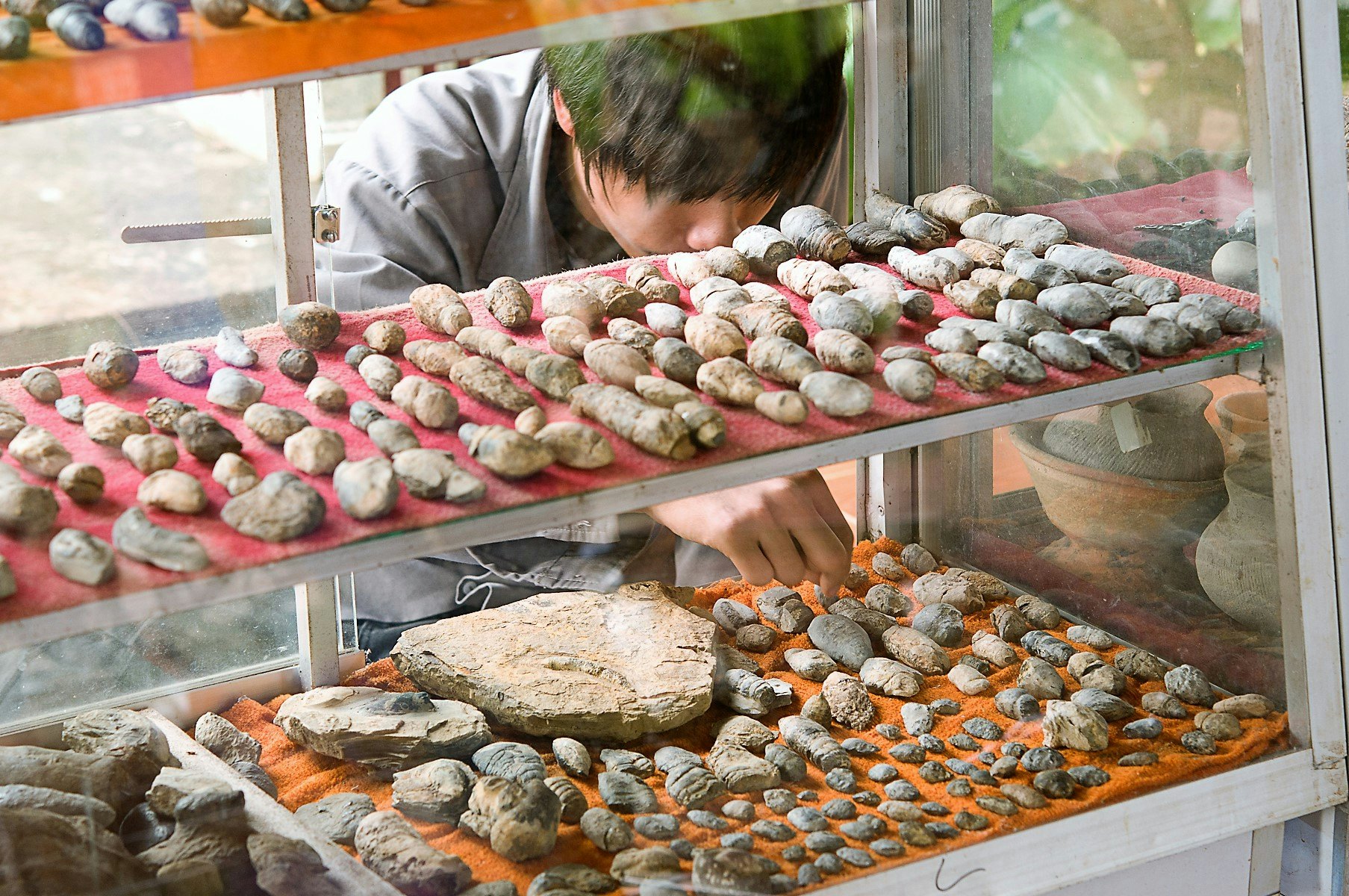
Beware any rock that’s oblong and cylindrical, like a stubby stone finger. It might not be a rock. It could, very likely, be a coprolite. Yes, that’s another name for fossilized feces.
And if you do find one, call Thanit Nonsrirach. A paleontologist at Mahasarakham University in Thailand, Nonsrirach estimates he’s examined over 500 coprolites. To date, just one has contained a surprise: eggs from not one but two parasite species, indicating that the poop’s host was carrying squatters.
Nonsrirach is the first author of a study published today in the journal PLOS ONE that describes the coprolite, its fossilized eggs, and what it tells us about animals of the distant past.
Old sh*t, new findings
At just over 7 centimeters long (almost 3 inches), this fecal fossil might not be much to look at but has been hardening since the Late Triassic period about 200 million years ago. Inside it, six small, round structures between a mere 50 and 150 micrometers long represent multiple species of parasite that had been dwelling in this lucky host’s belly at once. One specimen, a thick-shelled oval, is the egg of a parasitic nematode worm. The other five are unidentified worm eggs or protozoan cysts. Past studies, the paper notes, have only found instances of single species in coprolites.
“We were very surprised by the discovery of the parasite fossil,” Nonsrirach writes to Inverse. “Parasite fossils are quite rare, especially those from soft-bodied organisms.” Soft tissue decomposes quickly, so it’s difficult to study ancient parasites that inhabited them. A fossilized parasite egg might not be as exciting as a dinosaur bone, but these freeloaders can tell us a good deal about the prehistoric food chain.
Even more exciting, the nematode egg was split open, “unveiling the embryonic structure” of the worm inside, Nonsrirach continues. He writes that when studying worm eggs, scientists typically use chemical techniques that “merely reveal the external surface of the eggs.” This serendipitous finding provides an opportunity for further classifying the species.
This fossil came from the Huai Hin Lat Formation in Chaiyaphum Province in central northeastern Thailand. Residents of Nong Yakong village found a trove of coprolites, including the parasite-infested one.
“The peculiar appearance of these findings intrigued the villagers, who considered them potentially auspicious and capable of bestowing good luck if repurposed as talismans,” Nonsrirach writes to Inverse. “In 2010, our team received word of this discovery and embarked on a field expedition, guiding the villagers to the actual fossil site.”
Paleoscatology 101
So, whose parasite-infested poop was it?
The sample offers a few clues. First, its shape and form intimate the innards of its creator, “specifically reflecting the configuration of their intestines and anus,” Nonsrirach writes. The cylindrical shape suggests a large amphibian or reptile.
Next, its contents signal the predator’s diet and digestive function. This coprolite contained no remnants of a prey skeleton, an indicator that it went through a crocodile’s robust, bone-grinding gut. However, crocodiles emerged 100 million years after this sample’s date, so the culprit is likely a creature akin to crocodiles or one that evolved alongside them, such as the phytosaur.
Indeed, phytosaurs appeared about 240 million years ago during the Middle Triassic period, and there’s evidence they lurked near this particular fossil site. (And if you ever need to identify a shark or fish coprolite, Nonsrirach writes that those tend to be spiral-shaped.)
Everything comes down to poo
Ultimately, this hoary stool is a window into the lives of ancient soft-bodied creatures.
“This new point of view gives us a deeper understanding of how past ecosystems were connected and how they affected the lives of prehistoric animals,” Nonsrirach writes. He wonders about the interactions between predators, prey animals, and parasites or whether the phytosaur happened to swallow infected prey.
“Coprolites can preserve the soft bodies of ancient organisms, which helps us learn more about their biology,” Nonsrirach writes. “It's exciting to think that we might uncover new fossils that have never been seen before.”







